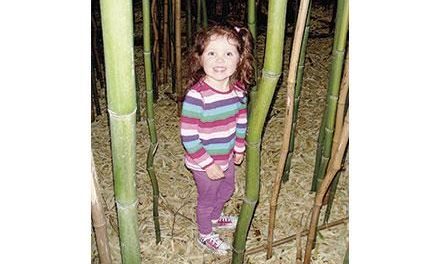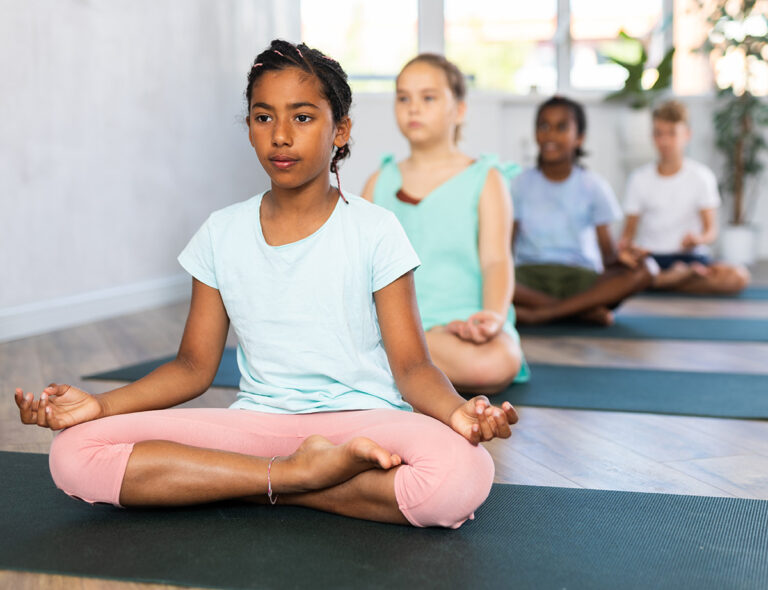In a study conducted by the Institute for Innovation in Social Policy, 84 percent of parents surveyed said they strongly value arts in their children’s lives, and for good reason. Research has demonstrated exposure to culture, such as fine arts, theater, music and dance, can play a critical role in the full and all-sided development of a child that reaches far beyond identifying and cultivating artistic talent and appreciation. From improved cognitive abilities, language development and motor skills to a deeper sense of self, cultural awareness and inventiveness, there are an abundance of reasons to ensure kids are provided the opportunity to learn and participate in the arts.
President Barack Obama once said, “The future belongs to young people with an education and the imagination to create.” As perpetual budget cuts continue to threaten the existence of quality in-school art education, it’s increasingly necessary for families to seek out on their own the meaningful cultural experiences that spur creativity. While we’re lucky to live in a metropolitan area where a wealth of resources exist, it’s crucial to understand the factors involved in making early experiences engaging, age-appropriate and, most importantly, fun.
Why Art? Why Early?
According to Anna Housley Juster, the senior director of child development and community engagement at the Boston Children’s Museum, in a society in which kids are often inundated with testing and chronically overscheduled, it’s art that provides the balance that’s so important for healthy development. “It’s essential to expose children to culture and the arts, and especially to find ways to do that when they’re young and incredibly open to all different perspectives and ways of expressing oneself,” she explains.
While some question what a child under the age of 2 is really capable of when it comes to fine art, Housley Juster argues the toddler stage is the perfect time to be introduced to the creative process. “For decades at Boston Children’s Museum, we’ve had a really strong focus on just the messing about with a wide range of materials and developing fine motor skills, so eventually they could be using tools like narrow brushes and fine tipped pens and pencils and all of these things,” she says, adding that at young ages the focus should always be on the process and never the final product.
Abby McBride, manager of family programs at the Museum of Fine Arts, Boston, also stresses the value in having young children experience art and culture. “They develop social skills because they’re interacting with other children. They learn how to see, develop that creativity, the imagination – even literacy skills, like when we’re looking at an art object and they’re learning how to talk about it. There are myriad benefits,” she says.
Lloyd Woodcock, director of education at Wheelock Family Theatre, believes early lessons should also be about providing an understanding of art as a natural human expression. “We are art,” he says. “We’re an artistic expression ourselves, every time we speak, every time we draw or dance or sing, that’s an expression of our inner selves.”
The Importance of First Impressions
Whether it’s the excitement of witnessing Peter Pan flying across the stage at your local theater or the feeling of connecting with the emotional story of an artist who painted a picture hundreds of years ago, the right first experience can set a future art lover up for life. The wrong one, however, such as standing and listening to someone talk about art or sitting through a long and complex musical performance, can have the opposite effect.
“Particularly with an art museum that’s not geared toward children, kids could come on a tour and be completely bored and form a picture about what the museum is like and not want to come back,” says McBride. “It’s really important to get children feeling comfortable in this kind of a space at an early age, because once they feel comfortable and know this is a place where they can come, have fun and learn, and it’s a space for them, they’ll want to return.”
Housley Juster explains when exposing kids to art and culture, there are two basic categories to consider. The hands-on activities, such as exploring materials, feeling the quality of different types of paint, singing songs and dancing, provide a foundation for children to identify themselves as creators. Then there’s the appreciation side and paying attention to the art in the world around them. That helps establish the ability to distinguish between art forms and understand the perspective of the artist that might be different from their own.
Finding the Right Experience
When it comes to choosing cultural venues and events for children, it’s very much about being aware of what’s developmentally appropriate across different ages. For kids under 5 years old, the experience has to be hands on.
“Beyond toddlerhood, you can get into appreciation by asking questions that draw children’s attention to art,” says Housley Juster. “That might be an introduction, and then you would really want to get back to allowing children to explore the creative process.” At the age of 5 or 6, when kids are in school and have been exposed to a range of materials in the process of getting messy and creative in self-directed ways, you can begin to introduce some of the basics and become a bit more analytical.
“One of the things we strive to do is teach adults how to facilitate meaningful conversations about the art with their children. And to feel comfortable,” says McBride. “What I would suggest is just asking questions – having children explain what they’re seeing, what they’re looking at, comparing and contrasting artworks that are side by side or in the same galleries. And connecting it to what they do at home or do in school if they draw or if they dance. Connecting it to real life.”
Equally important as picking out shows and exhibits that are tailored for kids, is providing context to the experience that makes it more enriching. At Wheelock Family Theatre, for instance, there are free pre- and post-show workshops that might feature anything from members of the cast teaching a piece of choreography from the play to demonstrations on how the set or props were made. It also offers a study guide that parents can use for ideas on how to start a larger conversation about the art. Says Woodcock, “It’s not just come see a show and that’s it. We want to immerse you in the total experience.”
While the Boston Children’s Museum offers a host of programs and exhibits designed to educate and entertain kids, the Museum of Fine Arts, Boston, also has developed programs ranging from a specialized Kid’s Tour to A Guide to Family Fun at the MFA containing tips for engaging young visitors. Parents are encouraged to pick up Family Activity Totes (free with admission) at the visitor center that contain items such as a sketch pad and colored pencils, binoculars for children to look at the artwork through and a little globe so they can keep track of where the art comes from as they go about the galleries. From taking pictures (non-flash photography is allowed at MFA) for a collage or flip book to buying a collection of postcards from the gift shop and creating your own in-museum scavenger hunt, whatever you can do to make things fun while keeping the focus on the art enhances the experience.
Planning the Perfect Outing
When it comes to the logistics of taking the family to the museum or a show, Housley Juster advises parents to try not to think of children as miniature adults. “Their brains and bodies are fundamentally different. They have different needs for their physical activity and their engagement with the world around them.” She recommends limiting the amount young ones are standing, especially 5-year-olds and younger, and factoring travel, walking around and waiting-in-line times in planning your journey. Be realistic about attention spans and break the day up by stopping for something to eat and including opportunities for kids to move their bodies and be hands on.
“I’m just a proponent of giving your child the space and the freedom to experience things. Particularly with young children, because you don’t necessarily know what they are going to gravitate toward once they get into the space,” says McBride. “So not overscheduling, but also not having all these goals in your mind of what needs to happen or needs to get done or they need to get out of an experience, because sometimes that can totally stifle a child’s creativity.”
Woodcock believes in taking the experience as far as you can go with it, dressing up, going out for a sit-down meal and using the time together to talk about the show and build anticipation. It’s a great idea to get to the venue early, allowing time to use the restroom, find your seats and take in an environment that’s often as interesting as the show itself. Then stick around after to get an autograph from a cast member on your Playbill. “Having that experience of dinner, talk, questions, see the show, more talk, more questions, is really important … making it more of an event rather than just something that you’re just coming to.”
Whether you’re a dyed-in-the-wool art lover or would rather visit the dentist than the ballet or a museum (you might have had a bad early experience), you’re likely equally enthusiastic to provide experiences that not only promote healthy development, but that your kids are going to love and remember for the rest of their lives. Just choose something interesting, confirm it’s developmentally appropriate and go all in on making the activity as fun and enjoyable as possible for the entire family.
Brian Spero is a father and frequent contributor to Boston Parents Paper.
Around the Town
For upcoming performances, programs and classes, check out these sites or turn to our Calendar on page 25:
• Arlington Children’s Theater; act.arlington.ma.us
• ArtsEmerson; artsemerson.org
• Boston Children’s Theatre; bostonchildrenstheatre.org
• Coolidge Corner Theatre; coolidge.org
• Concord Museum; concordmuseum.org
• Discovery Museums; discoverymuseums.org
• Museum of Fine Arts, Boston; mfa.org
• New Art Center; newartcenter.org
• Stoneham Theatre; stonehamtheatre.org
• The Hanover Theatre; thehanovertheatre.org
• The Mary Baker Eddy Library; marybakereddylibrary.org




















